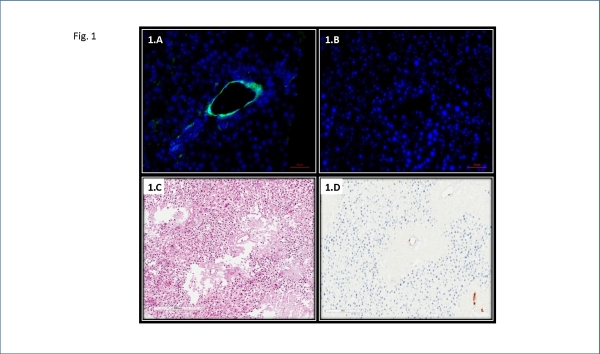Re-Endothelialization of Liver Xenografts Utilizing Human Endothelial Cells
1Surgery, University of Maryland, Baltimore, MD
2Pathology, University of Maryland, Baltimore, MD.
Meeting: 2018 American Transplant Congress
Abstract number: B388
Keywords: Allorecognition, Bioengineering, Endothelial cells, Xenotransplantation
Session Information
Session Name: Poster Session B: Xenotransplantation
Session Type: Poster Session
Date: Sunday, June 3, 2018
Session Time: 6:00pm-7:00pm
 Presentation Time: 6:00pm-7:00pm
Presentation Time: 6:00pm-7:00pm
Location: Hall 4EF
Introduction:Acute antibody mediated rejection due to preformed antibodies present in human serum remains a hurdle to successful xenotransplantation. Xenograft vascular endothelium represents the initial site of recipient immune exposure to xenoantigens. We hypothesized that biologically engineered liver xenografts after re-endothelialization of the vascular tree with allogenic endothelial cells has the potential to evade the recipient's immune response against xenografts.
Methods:Rat livers were procured using aseptic technique (n=6). A novel protocol of selective de-endothelialization was developed utilizing 0.1% SDS perfusion for 15 min using our established bioreactor perfusion system. Treated grafts were examined under immunofluorescent microscopy using rat specific anti-CD34. Human umbilical vein endothelial cells were then introduced into the de-endothelialized livers, and perfused with culture media. Grafts were kept for 3 days at 37C. Constructs were subsequently examined immunohistochemically using human specific anti-CD31.
Results:SDS concentrations of 0.1 SDS showed selective de-endothelialization yet complete compared to native liver, while the liver architecture remained intact and the majority of liver cells were viable (Fig 1A, 1B). HUVECs were successfully engrafted onto the rat liver vessels, which were de-endothelialized with SDS. This was confirmed by H&E and immunohistochemistry staining (Fig 1C, 1D).
Conclusions:Selective de-endothelialization of rat livers was successful, and human cells could re-establish the xenograft vascular bed. This method demonstrates the ability to manipulate a key component of the immune response to xenogeneic antigen. Future experiments are directed at ex-vivo perfusion of the re-endothelilaized grafts with human blood.
 A.Native rat liver stained with CD34(green) B.Liver samples following de-endothelilazation stained with CD34(negative) C.H&E showing the viability of liver cells on day 2 following re-endothelialization D.IHC showing successful re-endothelialization of the liver vascular tree with HUVECs.
A.Native rat liver stained with CD34(green) B.Liver samples following de-endothelilazation stained with CD34(negative) C.H&E showing the viability of liver cells on day 2 following re-endothelialization D.IHC showing successful re-endothelialization of the liver vascular tree with HUVECs.
CITATION INFORMATION: Hassanein W., Patel P., Werdsheim A., Brilliant J., Buckingham E., Shockcor N., Drachenberg C., Barth R., LaMattina J. Re-Endothelialization of Liver Xenografts Utilizing Human Endothelial Cells Am J Transplant. 2017;17 (suppl 3).
To cite this abstract in AMA style:
Hassanein W, Patel P, Werdsheim A, Brilliant J, Buckingham E, Shockcor N, Drachenberg C, Barth R, LaMattina J. Re-Endothelialization of Liver Xenografts Utilizing Human Endothelial Cells [abstract]. https://atcmeetingabstracts.com/abstract/re-endothelialization-of-liver-xenografts-utilizing-human-endothelial-cells/. Accessed December 28, 2025.« Back to 2018 American Transplant Congress
